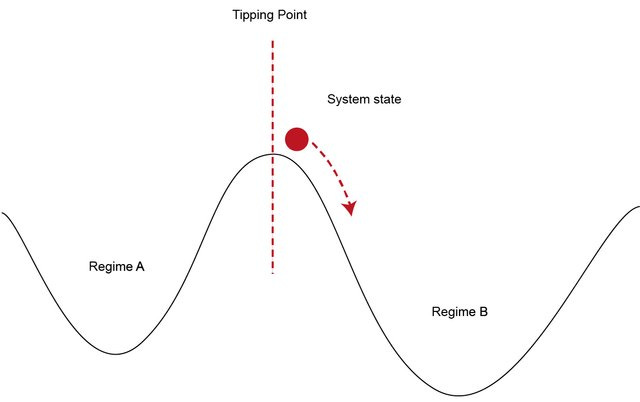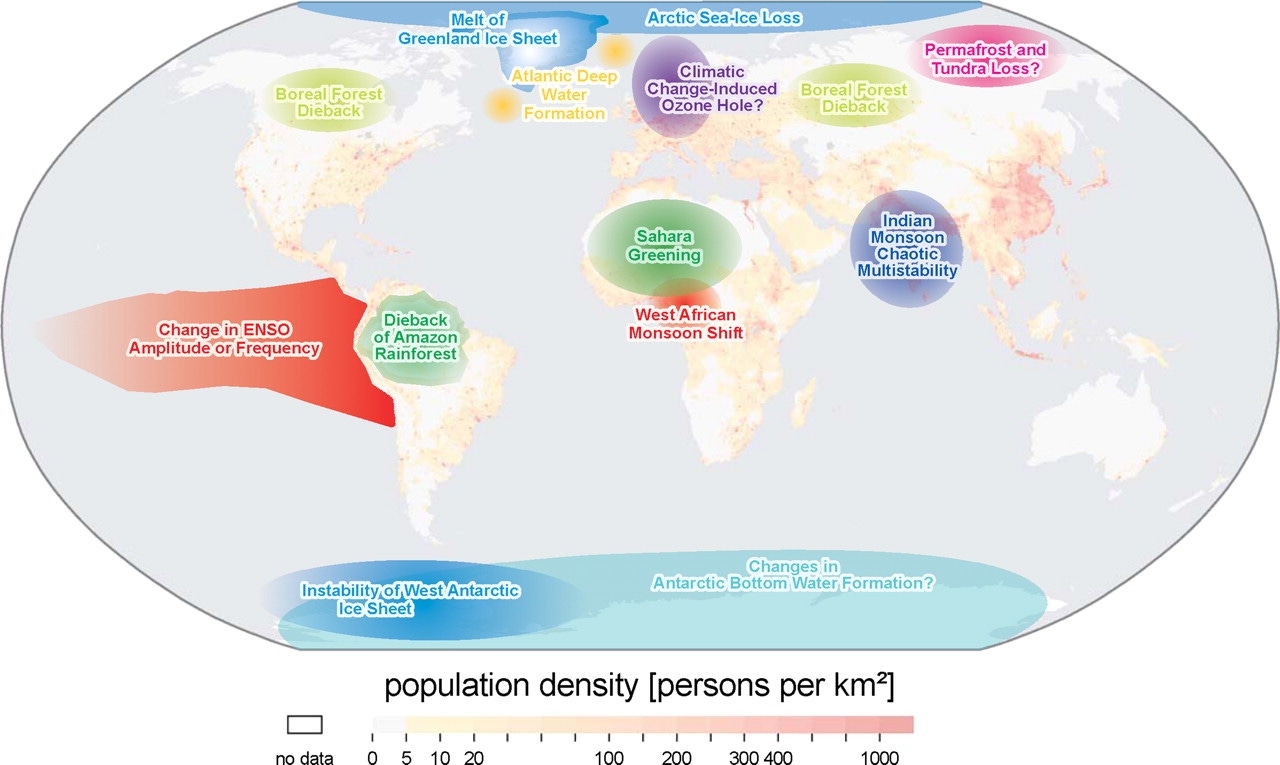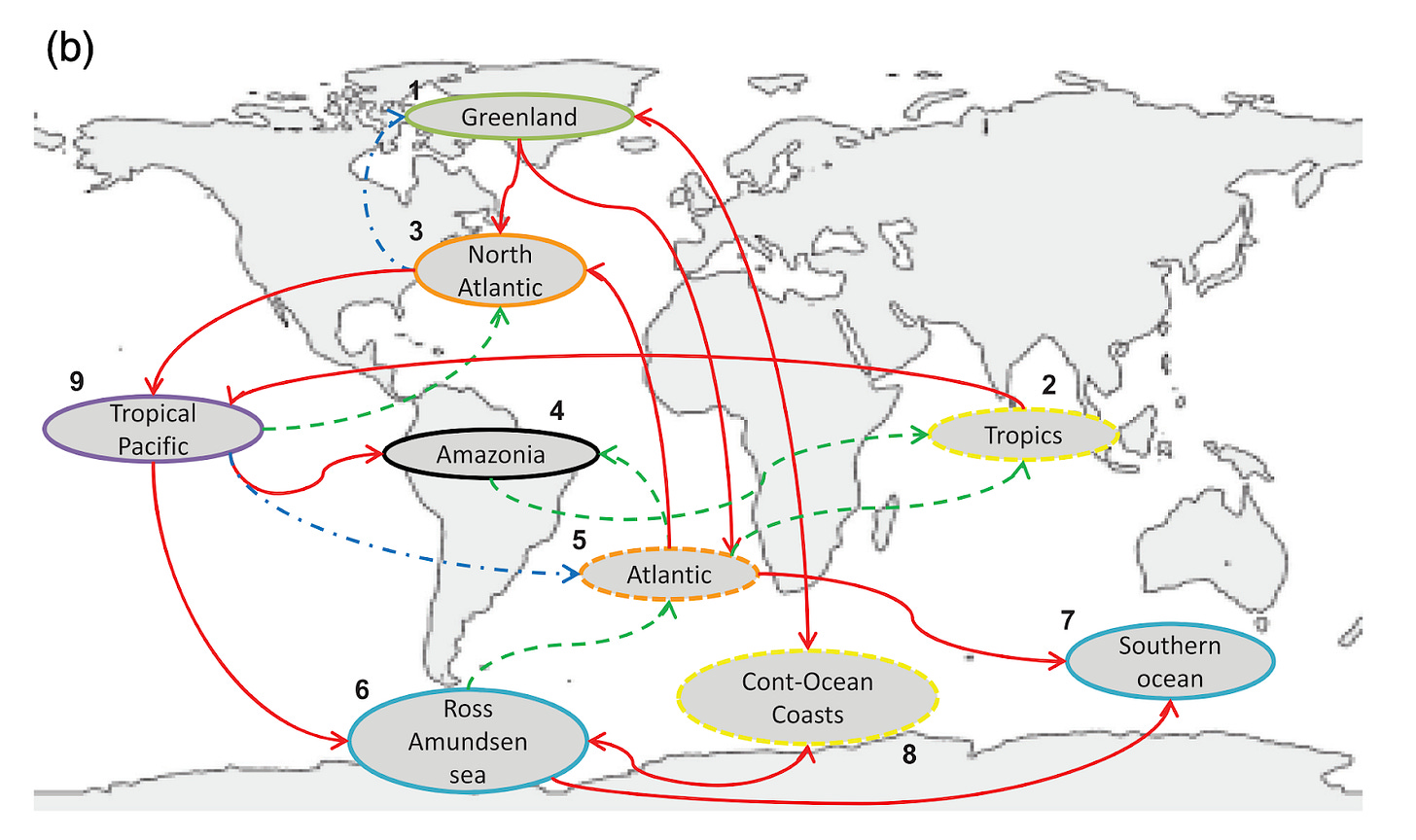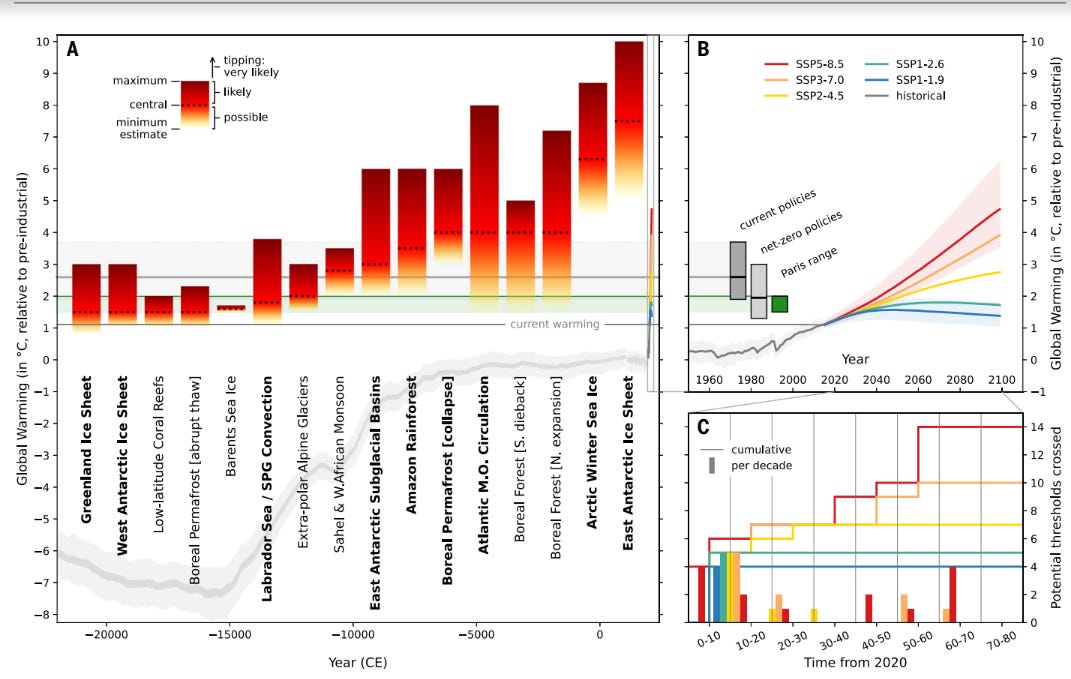Tipping Points
Climate tipping points occur when specific warming thresholds are breached. Once crossed, these points can set off cascading effects. Are we approaching these critical limits?

Father Zeus held out his sacred golden scales:
in them he placed two fates of death that lays men low—
one for Achilles, one for Hector breaker of horses
—Homer, “The Iliad”
We've long understood that the planet is warming—but how dire is the situation? Are we in better or worse shape than a decade ago? And which regions face the most urgent risks?
To answer these questions, we turn to the science of climate tipping points—critical thresholds that, once crossed, can trigger irreversible changes to our planet. Let’s explore what the latest research reveals.
What are tipping points?
Tipping points are critical thresholds at which any small disturbance can significantly alter the state or development of a system. They act as warning signals and apply to various contexts, from climate science to economics, technology, and social systems.

Climate tipping points are defined based on warming thresholds. If a part of the climate system surpasses certain temperature limits irreversibly, it means that region has crossed its tipping point, leading to substantial impacts on the Earth system.
In 2008, Lenton and colleagues published a study identifying tipping elements, which are large-scale climate components where tipping points could be triggered by human activities. These elements are associated with specific regions and typically cover at least a subcontinental scale of about 1,000 km. Essentially, tipping elements are parts of the Earth system that, once pushed beyond a critical point, can lead to major and potentially self-sustaining shifts in climate and environmental conditions.
From the major regions identified in their study, the authors ranked and listed key areas where climate policy measures should be applied to address the critical impacts they observed through their methodology.

The critical regions identified include:
Arctic sea ice extent in summer
Greenland and Antarctic ice sheets
North Atlantic deep water formation
El Niño-Southern Oscillation
Indian and African monsoons
The Amazon rainforest and boreal forests

The list of impacts focuses on ecosystem changes, rising sea levels, regional cooling, biodiversity loss, biome shifts, droughts, warming, and more.
The complexity of climate interactions
One of the challenges in climate science is that the system is constantly self-reinforcing. Climate subsystems—such as the oceans, atmosphere, and hydrosphere—are tightly coupled. This means there are potential interactions between the regions and elements defined by Lenton et al.
In 2009, another study was published analyzing the interconnected nature of tipping elements. The authors noted that interactions between tipping points could even accelerate global warming.

An escalating planetary emergency
In 2019, Lenton and colleagues revisited the concept of tipping points, warning that we are in a state of planetary emergency: both the risk and urgency of the situation are acute. The authors emphasize that previous assumptions of these events being low probability are outdated, and recent research suggests that they could be triggered at lower temperature thresholds.
With the availability of new observations and increasingly complex numerical model outputs, researchers can now assess the status of previously identified critical regions and define new ones. There are several tipping points that are already nearing critical thresholds, including the rapid melting of the Greenland and West Antarctic ice sheets, which could contribute to significant sea level rise over centuries or even accelerate within decades. Other risks include the destabilization of the Atlantic thermohaline circulation, Arctic sea-ice loss, permafrost thawing, and shifts in tropical rainforests and boreal forests. These changes not only threaten biodiversity and local ecosystems but also have global consequences, such as disrupting monsoon patterns, increasing drought frequency, and amplifying greenhouse gas emissions through feedback loops.
The future is already here
The world is fast approaching a planetary emergency, and the window for effective action is closing rapidly. The future is not tomorrow; it’s already here. With global warming at around 1.1°C above pre-industrial levels, we are already nearing the lower end of five uncertainty ranges for climate tipping points.
Within the Paris Agreement’s warming range, six tipping points are likely to be triggered:
The collapse of the Greenland and Antarctic ice sheets
The extinction of low-latitude coral reefs
The thawing of boreal forests in Russia and Eastern Europe
The figure below summarizes the critical temperature thresholds for each element of the climate system. It is crucial to note the overlap between the green shading, representing the Paris Agreement temperature range, and the red-colored regions.

The urgency of climate mitigation and adaptation
The studies we've reviewed here, along with countless others, underscore a stark reality: the need for both climate change mitigation and adaptation is urgent. Mitigation—reducing emissions to limit warming—is crucial, but equally important is adaptation—preparing communities and ecosystems to cope with the impacts of climate change that are already underway.
To navigate the challenges ahead, we must not only act globally but also deepen our understanding of local vulnerabilities. By focusing on both mitigation and adaptation, we can help vulnerable regions build resilience and safeguard livelihoods against climate emergencies.
References
Armstrong McKay, D. I., Staal, A., Abrams, J. F., Winkelmann, R., Sakschewski, B., Loriani, S., Fetzer, I., Cornell, S. E., Rockström, J., & Lenton, T. M. (2022). Exceeding 1.5°C global warming could trigger multiple climate tipping points. Science, 377(6611), eabn7950. https://doi.org/https://doi.org/10.1126/science.abn7950
Gaucherel, C., & Moron, V. (2016). Potential stabilizing points to mitigate tipping point interactions in Earth’s climate. International Journal of Climatology. https://doi.org/10.1002/joc.4712
Kriegler, E., Hall, J. W., Held, H., Dawson, R., & Schellnhuber, H. J. (2009). Imprecise probability assessment of tipping points in the climate system. Proceedings of the National Academy of Sciences, 106(13), 5041-5046. https://doi.org/10.1073/pnas.0809117106
Lenton, T. M., Held, H., Kriegler, E., Hall, J. W., Lucht, W., Rahmstorf, S., & Schellnhuber, H. J. (2008). Tipping elements in the Earth's climate system. Proceedings of the National Academy of Sciences, 105(6), 1786-1793. https://doi.org/10.1073/pnas.0705414105
Lenton, T. M., Rockström, J., Gaffney, O., Rahmstorf, S., Richardson, K., Steffen, W., & Schellnhuber, H. J. (2019). Climate tipping points — too risky to bet against. Nature, 575(7784), 592–595. https://doi.org/10.1038/d41586-019-03595-0
Rauter, M., Thaler, T., Attems, M.-S., & Fuchs, S. (2019). Obligation or innovation: Can the EU Floods Directive be seen as a tipping point towards more resilient flood risk management? A case study from Vorarlberg, Austria. Institute of Mountain Risk Engineering, University of Natural Resources and Life Sciences



